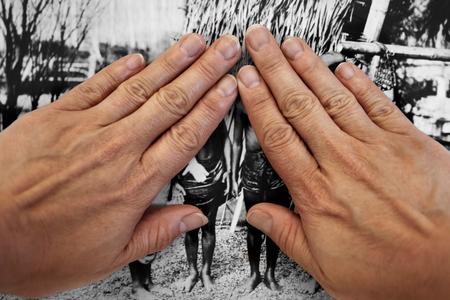The southern, American tradition of fried chicken is a universally loved and understood experience, a salty, crispy exterior that gives way to a tender and moist interior. The bird is common, the preparation simple, the dish widely adaptable and democratic.
Versions of fried chicken appear in Caribbean and Central America and in Asia if not everywhere in the world. In the U.S., fried chicken has been translated into chicken nuggets, chicken fingers, chicken sticks and chicken patties, as if the food industry ran out of ideas and decided on different shapes instead of different recipes.
Perhaps there are only so many ways to fry a chicken — true, Puerto Rican fried chicken is not much different than American fried chicken, for example — but recently something new has emerged on Western shores: Korean fried chicken, often coincidentally referred to as KFC.
Unlike the Colonel'ês KFC, Korean fried chicken does not rely on a heavy batter. Just a light dredging of corn starch or rice flour will do. Typically, Korean fried chicken is coated in a thick, sweet, spicy sauce. Another version is served dry, without sauce and is simply flavored; it is almost bland, which probably comes as a surprise to those who rightly consider the hallmark of Korean food to be strong, robust flavors and spicy accents.
The hook of KFC is that the chicken is par-fried, removed and allowed to sit and cool until it is fried again. The double frying cooks the meat evenly and achieves maximum crispiness. Only wings and legs are used for Korean fried chicken, because the same results cannot be achieved with breasts and thighs. The meat is too thick and will not cook evenly.
Here'ês the catch with KFC: Korean restaurants generally do not serve it. It is not considered food to be eaten as a meal, but bar food to be eaten with pickled radishes, beer, and soju, a Korean rice liquor that is stronger than sake. So finding it is not exactly easy.
As a food trend, KFC is relatively new in Korea. Barely 20 years old, the concept caught on quickly and today fried chicken is served all over South Korea by chains and in small, family-run saloons. KFC started making inroads into the U.S. about 10 years ago, slowly and mostly under the radar until about four years ago when the big KFC franchises, Bon Chon and KyoChon opened glossy, futuristic-looking restaurants in New York and Los Angeles. At the edge of Manhattan'ês Koreatown, BonChon and KyoChon share the same block. (The two are the McDonald'ês and Burger King of Korean fried chicken.)
Should the big franchises expand in the U.S., Seattle, with its sizeable Korean and Asian-American population, seems a worthy candidate. But until then KFC resides mostly in the shadows of strip malls. That is where Cockatoo in Federal Way serves baskets of these deep-fried wonders.
Cockatoo is a Korean bar on Pacific Highway South in a strip mall called the Rhoda Plaza. Its windows obscured, lacking a big sign, located between the chiropractic office of Dr. Won Kim and the 3 Layers Deep tattoo parlor, Cockatoo is well-hidden from the arterial. Dimly lit, jukebox blaring, it feels like a bar in most ways — a bar, however, with killer food that includes sautéed squid, stewed rice cakes, platters of fruit and eggs, and three variations of KFC, plain, spicy, and very spicy.
The heart of the spicy sauce is gochujang, hot, fermented bean paste made with soybean paste, rice powder, salt and chili peppers. Sesame, soy and garlic are also key ingredients. The spicy variety is sprinkled with chopped peanuts. Every basket of chicken is also served with cubes of sweetly pickled daikon radish. To fully appreciate the experience of KFC, you should order it plain and with sauce, alternating bites of both, using the radish as a palate-cleanser the way you use pickled ginger when eating sushi. Done right, a batch of KFC is about the skin, the crispy and delicate casing that, whether plain or covered in sauce, can make the meat seem like an afterthought.
The concept of fried chicken is well established in Cantonese cooking. The Japanese have their tradition of katsu (breaded, deep-fried pork or chicken). But a lot of Asian fried chicken appears to be borrowed or at least recently invented. Filipinos are fond of American-style fried chicken, no doubt helped by the American military presence in the Philippines. Many Japanese restaurants serve karaage or ginger-flavored, chicken wings, similar to KFC but not as spicy. Like KFC, karaage is a modern, not traditional, invention.
Koreans have borrowed a few ideas from American cooking in the decades following the Korean War — spam and potato salad among them. Chicken wings seem a logical addition.
You are more likely to stumble upon KFC in the Seattle area, rather than find it in the phone book or discover it on Yelp. Around here, it is more of an underground food served at inconspicuous places where Korean-Americans gather: south King County, parts of Bellevue, and north Pierce County. The recipes vary slightly from proprietor to proprietor.
Cockatoo is large and relatively loud and looks similar to an American bar; Hanmaum, a few blocks south, is more of a traditional establishment, a place where you are more likely to see tables of men speaking Korean, convening over a spread of chicken wings, peanuts, rice cakes with spicy sauce, and soju. Of the two places, Cockatoo was my favorite, its chicken more succulent than Hanmaum'ês, but on a different day my conclusion might have been different.
Hanmaum is similarly hidden toward the back of another strip mall, near the offices of the Federal Way Korean-American Association and a nearby taco stand, gun store, and auto-detail shop.
Of the two, Cockatoo is more inviting and seems to draw a more diverse clientele that includes non-Koreans. Hanmaum requires more risk and immersion, but probably provides a more memorable experience. You get the feeling this is probably what a dive bar in Seoul looks like.
If you go: Cockatoo, 33130 Pacific Highway S., 253-661-2960, open 5 p.m.-2 a.m. daily. Hanmaum, 33304 Pacific Highway S., 253-925-0696, open 5 p.m.-1 a.m. daily.



